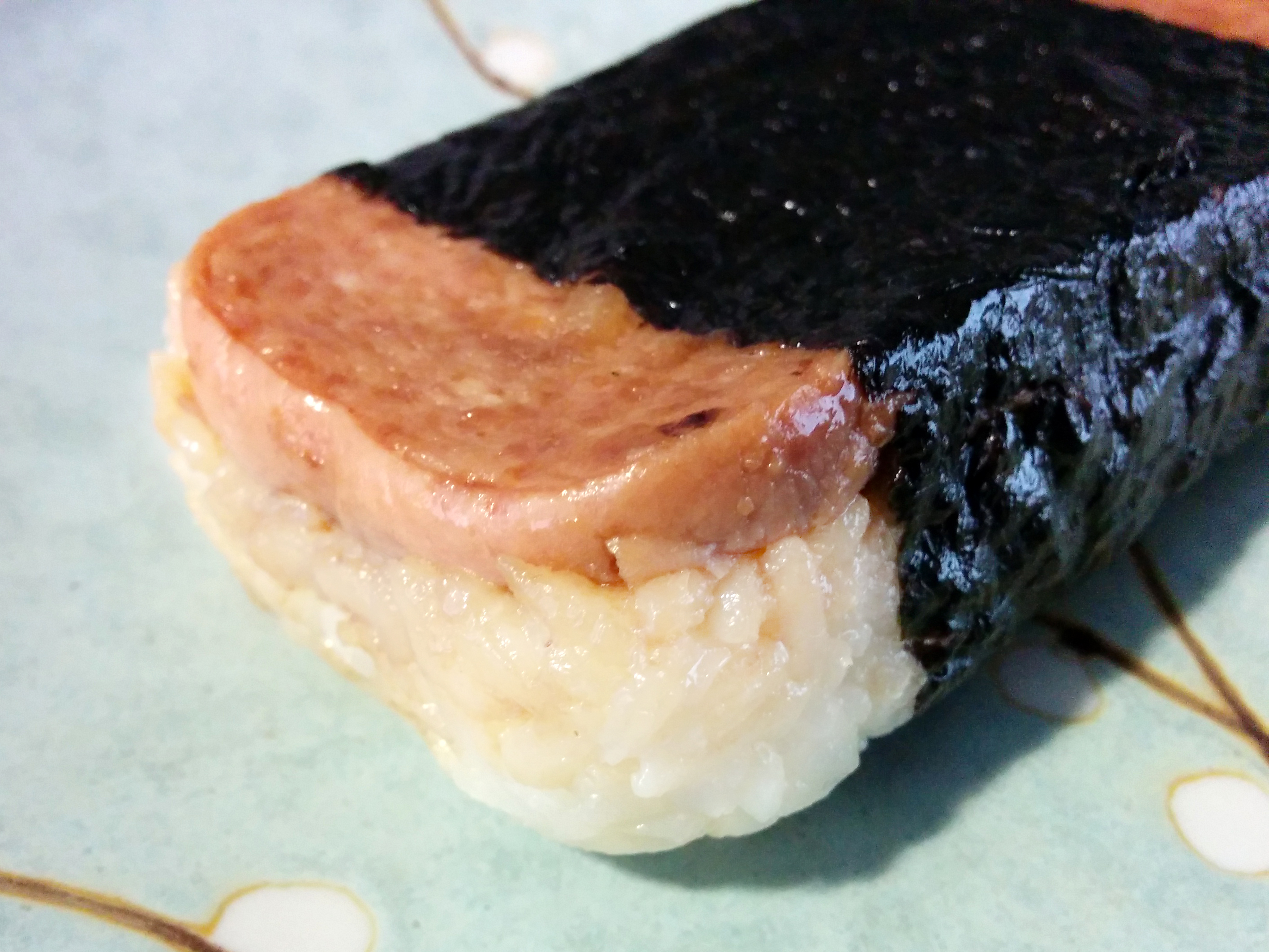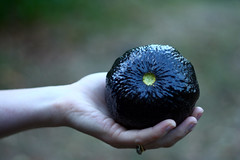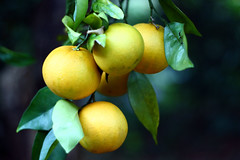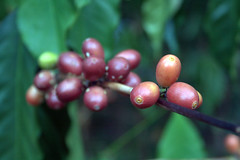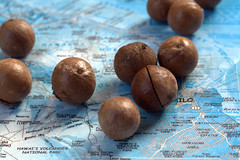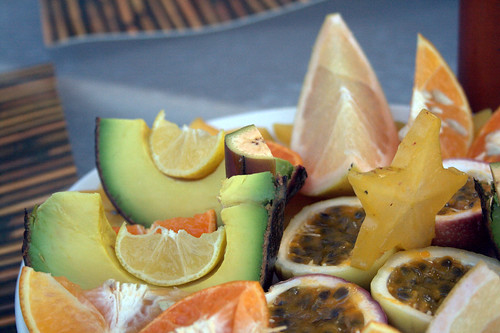Over 5 years after our honeymoon in Hawaii, I’m recreating one of my favorite discoveries of the trip: Spam Musubi.
We picked some up in a convenience store near the volcanoes and it was an unexpectedly good breakfast. It was also the first time I’d ever eaten Spam. Though we had plenty of fresh fruit, raw fish, and other delights, this portable snack stuck in my mind.
When individually wrapped in cling wrap, these are perfect on-the-go snacks or work lunches. The one in the photo below might be a bit worse for the wear after a trip to work in my bag, but tasted great and held together well.
Spam Musubi
Makes 10. Adapted from several recipes.
- 2 cups uncooked sushi rice
- 3 cups water
- 1/2 cup rice vinegar
- 1 tablespoon vegetable oil
- 1 teaspoon salt
- 2 tablespoons white sugar
- Rice (from recipe above), cooled halfway to room temperature
- 3 tablespoons soy sauce
- 3 tablespoons hoisin sauce
- 3 tablespoons sugar
- 12 ounce container Spam
- 3 to 5 sheets sushi nori (dry seaweed), depending on desired width of wrapping strip
- 2 tablespoons vegetable oil
- Slice Spam lengthwise into 10 slices. This sounds difficult, but just cut in half first, then cut each half into 5. It’s easy to cut.
- Stir together soy sauce, oyster sauce, and sugar until sugar is completely dissolved.
- Brush sauce on both sides of Spam slices and let sit for at least five minutes.
- While it’s marinating, saw out the bottom of the Spam can with a box cutter and fold over the edges so they’re not as sharp. Or, if you’re civilized (I’m not), you might own a musubi press.
- Heat oil at medium high in a large cast iron skillet. Cook slices until lightly browned; no need to wipe them off, just make sure they don’t burn.
- If you’d like, you can brush Spam with any leftover marinade after browning.
- Cut seaweed sheets in half (for complete coverage) or thirds (for a narrower strip).
- Put a strip of seaweed on your work surface, then the spam can on top, with an opening on the bottom.
- Press a handful of rice into the bottom of the Spam can from the top, then top with a slice of Spam, and press down on the spam. Gently remove the Spam can and wrap one side of the seaweed strip around the rice and spam.
- Dip your hand in a bit of water and wet the remaining length of the seaweed strip, then complete the wrap. The water helps the seaweed stick to itself.
- Wrap individually pieces in cling wrap if you’re not going to eat them right away.
